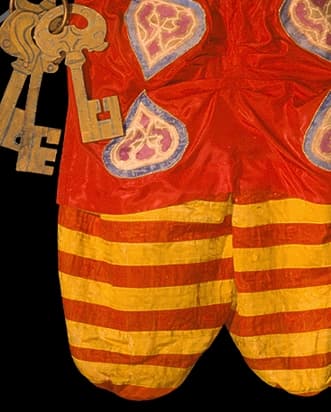



From the late 19th-century, European artists and designers delighted in the rich details and romantic atmosphere of exotic civilisations. Léon Bakst was the principal designer of the Russian Ballet's Orientalist ballets, with their tales of sexual passion, high drama and violent death, for which he drew on Indian, Persian, and Near Eastern art.
For Schéhérazade 1910, a tale from 1001 Nights, Bakst was inspired by Persian and Arabic sources to create his lavish sets and costumes. A similarly exotic Egyptian melodrama, Cleopatra 1909, was Bakst's first Parisian success. His combination of intense colours and complex patterns influenced new designs in fashion and interior decoration.
Bakst's great knowledge of the artistic traditions of many cultures underpinned his fresh approach to theatre design. As well as his interest in the opulent Oriental traditions, he was fascinated by ancient Greek art. He employed geometric patterns - circles, chevrons, stripes - along with mosaics and stylised plant motifs. Pure, bright colours replaced the white tunics of classical Greece.
